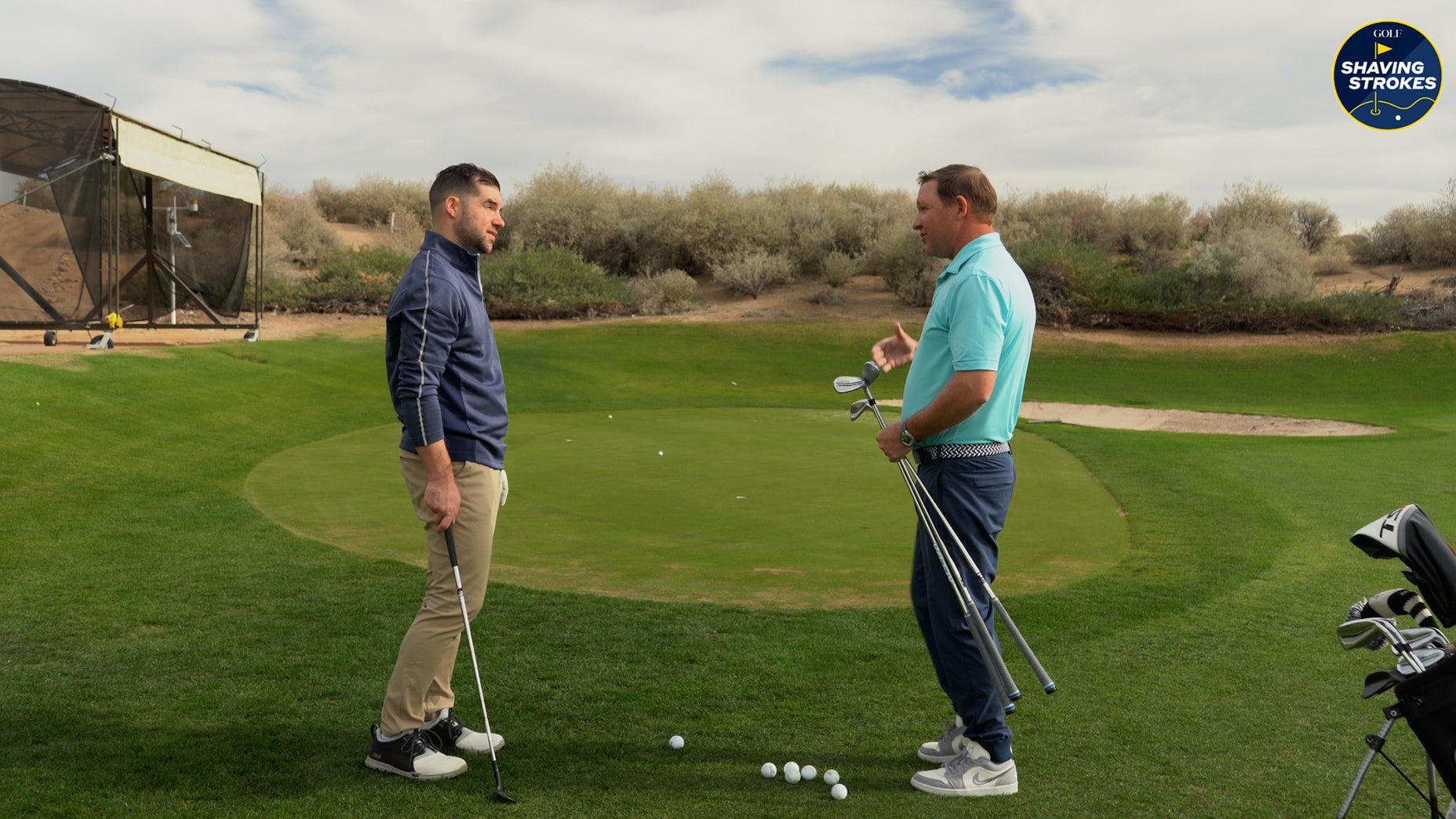Don’t always just default to a lob wedge in the short game, says this top teacher.
Images via Chad Gibbs
Welcome to Shaving Strokes, a GOLF.com series in which we’re sharing improvements, learnings and takeaways from amateur golfers just like you — including some of the speed bumps and challenges they faced along the way.
It’s always so impressive when I witness a really good golfer hit a tough shot with an unconventional club choice.
For instance, during a lesson last year on the 60-yard bunker shot, GOLF Top 100 Teacher Brian Mogg made me rethink my strategy from that tricky distance. Mogg showed me that opening the face up with an 8-iron can actually be a better weapon in order to stick it close.
But Mogg isn’t the only good golfer who does this type of stuff. In fact, look at any pro golfer, and you’ll notice plenty of them using alternative clubs in the short game — especially when playing nifty course designs like the Renaissance Club for this week’s Scottish Open, and Royal Troon for the Open Championship next week.
Thinking outside the box can be an essential part in scoring lower, and when you understand how to execute tough shots with different types of clubs, you’ll see more short-game success.
So how can you, the average golfer, do this? GOLF Teacher to Watch Chad Gibbs shares his tips below — along with three alternative club choices to try out while around the greens.
Try these 3 alternative clubs in the short game
“When a pro golfer misses a green on traditional course designs, they typically hit shots using their lob wedge, with many putting lots of backspin on their chips and pitches,” Gibbs tells me. “These players are so talented that they can control the ball like a yo-yo on a string.”
But things tend to change when golf is played on links-style designs.
“One main difference between American courses and links courses are the slower pace of the greens,” Gibbs says. “This lends itself for more short-game options from off the green — and the following clubs are some of my favorite to try out.”
Putter
The great Arnold Palmer once said that “your worst putt will usually be as good as your best chip,” so, in that vein, why not keep the ball on the ground and use a putter when off the green? Yes, the Texas Wedge can be an effective strategy — despite it being unpopular for many amateur golfers.
In order to use a putter from off the green, two things are crucial. First, you have to hit it solidly. If you don’t, it will begin to hop and bounce very early. Second, you need to release the toe, which will properly allow the ball to roll forward and hop less as it approaches the green.
By utilizing those two simple techniques, you’ll start to see better results when using a putter from off the green.
5-wood (hybrid)
During the 2004 Open Championship at Royal Troon, eventual champion Todd Hamilton made this method very popular, as he used a hybrid anywhere between five and 15 yards off the green.
When using this club, your technique should resemble the putter — but beware, because the ball comes off the face a little livelier than the flat stick. This means using a smaller backstroke, allowing the energy from the club’s head to generate the necessary power to get the ball to roll.
Most amateurs should just keep the ball on the ground for as long as possible in the short game, so this is a viable option to do so.
6-iron
Sure, a flop shot is more impressive and probably more fun to hit, but it’s much riskier than a traditional bump-and-run — which, again, helps keep the ball-flight lower when around the putting surface.
In order to hit a perfect bump-and-run in the short game, you need to crowd the ball like a putt, gently lift the heel of the club off the ground, and make an elongated putting stroke. Also make sure you’re using just a small amount of shaft lean, ensuring you strike the back of the ball.
So during your next round of golf, do as the pros do in the short game and utilize different types of shots with a variety of clubs. You might just find a new weapon that gives you a leg up over your playing partners.




